The Best Creamy Sous Vide Mashed Potatoes
on Oct 21, 2023, Updated Nov 21, 2023
This post may contain affiliate links. Please read my disclosure policy.
Sous Vide Mashed Potatoes are perfectly rich and creamy, full of buttery and garlicky flavor. This is my all-time favorite side dish recipe and always a crowd-pleaser! Unlike boiling potatoes in water, the sous vide method produces richer and more intense puree by immersing the potatoes in the buttery goodness during cooking, soaking up all the flavors!

This is a no-fail and easy recipe packed with flavors! Great for everyday meals as well as special occasions like Thanksgiving. I like to serve it with Sous Vide Lamb Chops, Sous Vide Sirloin Steak, Sous Vide Short Ribs, and Sous Vide Chicken Thighs.
The secret to this mash is that no water is introduced to the potatoes, and all the seasonings are cooked in the sous vide bag with the potatoes, so they are perfectly dense and creamy.
So What Exactly is Sous Vide?
Sous vide means “under vacuum” in French. It’s a water bath cooking method by sealing food in a bag, then cooking for a long time to a very precise temperature in a water bath. This technique is known for being a precise and consistent way to cook food evenly.
Why Sous Vide Mashed Potatoes?
Before we get to the actual recipe, let’s talk about the benefits of sous vide cooking mashed potatoes. Here are a few advantages:
- Sous vide cooking prevents any water from getting into the potatoes, producing much richer, creamier, and more flavorful mashed potatoes than boiling.
- You can walk away while it’s cooking, as it’s low-stress cooking, and no need to worry about undercooking or over-boiling.
- You can cook other vegetables at the same time with the potatoes. Vegetables such as carrots, Brussels sprouts, and corn can be cooked at the same temperature in the sous vide water bath.
Recipe Tools You’ll Need
- Sous Vide Immersion Circulators
- Zip-loc Bags or Vacuum Sealer (with Bags)
- Sous Vide Container or Large Pot
- Potato Masher
What Types Of Potatoes Are The Best For Mashed Potatoes?
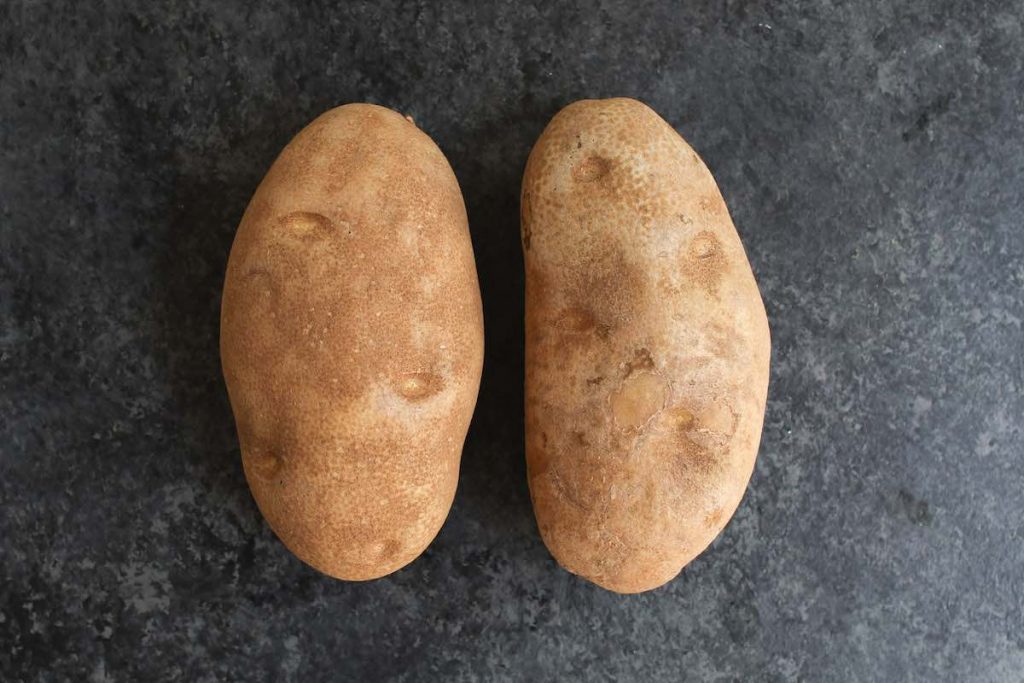
The best sous vide mashed potatoes start with the right potatoes. Go for starchy Russet potatoes or waxy Yukon golds. You can also use a mix of both!
Ingredients Besides Potatoes
Aside from the potatoes, there are only a few simple ingredients:
- Butter: Use unsalted butter so that you have full control of how salty your mash comes out. I always want my mashed potatoes to taste nice and buttery, but you can use less butter or substitute vegan butter.
- Garlic: Use fresh if possible. Add more if you like garlic flavor.
- Milk: Whole milk is the best for mashed potatoes. But you can substitute low-fat milk or heavy cream.
- Salt: I use kosher salt and season the potatoes at different points during the cooking process.
- Toppings: My favorite topping is chopped chives, which adds freshness to the mash. You can sprinkle chopped green onions, freshly ground black pepper, add more butter, or other herbs/ seasonings!
Step-By-Step Instructions With Photos
Step 1: Cut The Potatoes
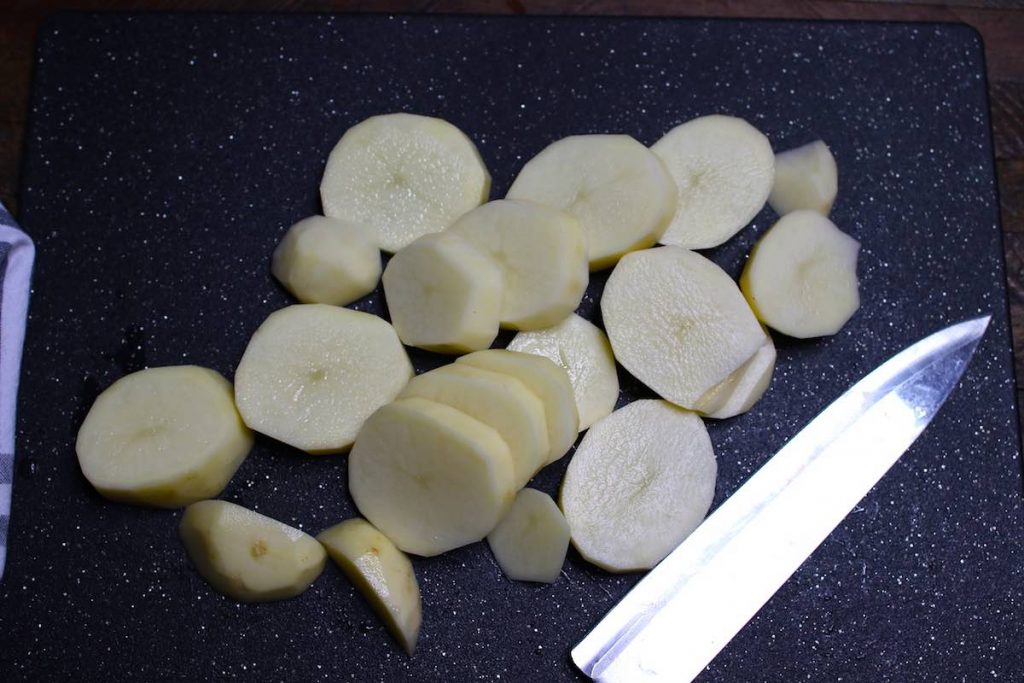
Peel your potatoes (or you can leave the skins on for extra flavor). Then slice them into 1/2-inch thick pieces.
Step 2: Vacuum Seal Potatoes
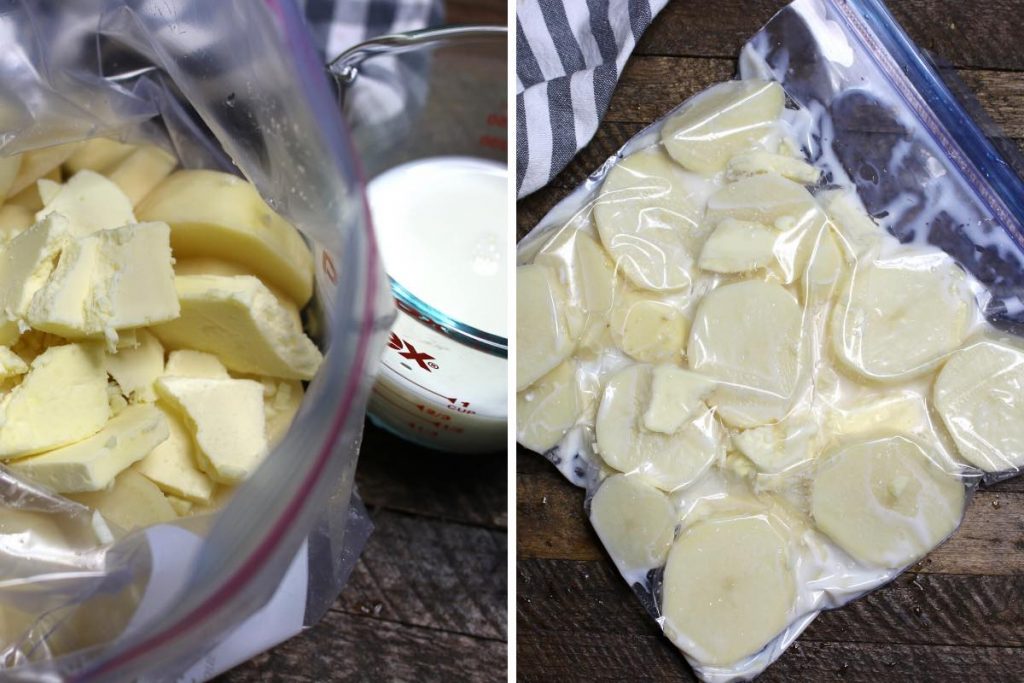
Place the potato slices into a zip-top bag, then season with butter, salt, and garlic. Add milk, and vacuum seal the bag using the “water displacement” technique (see details in the recipe).
Step 3: Sous Vide

Place the vacuum-sealed bag in the sous vide water bath and cook the potatoes at 194ºF (90ºC) for 1 hour.
Step 4: Mash The Potatoes
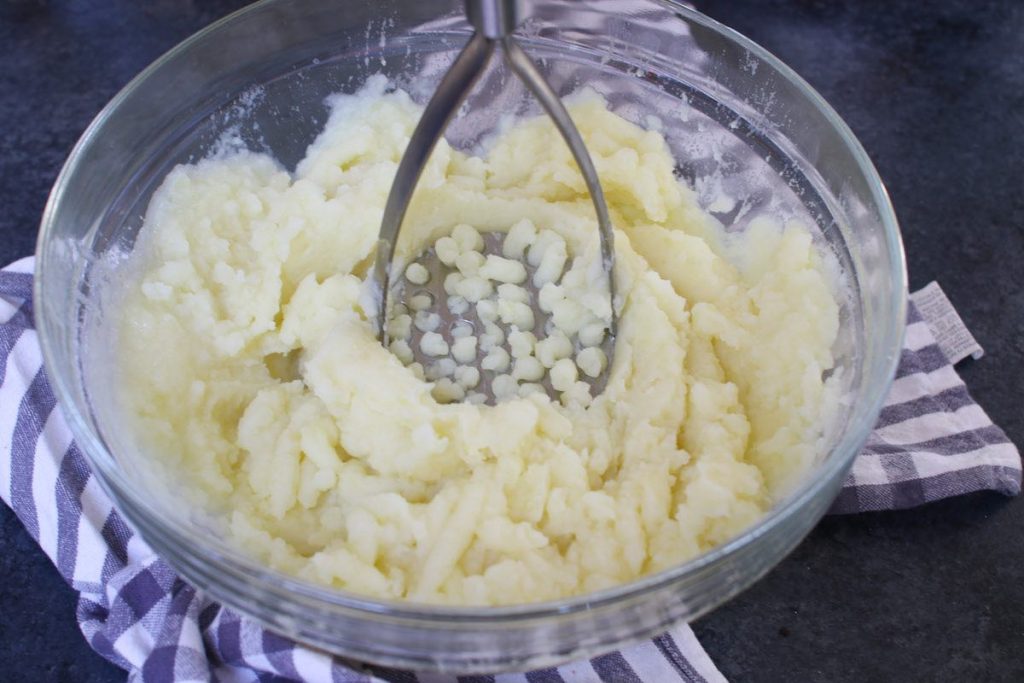
Transfer cooked potatoes to a large bowl, and add half of the liquid from the bag. Mash the potatoes with a potato masher until smooth, adding more liquid gradually if needed to your desired consistency.
Step 5: Taste and Season
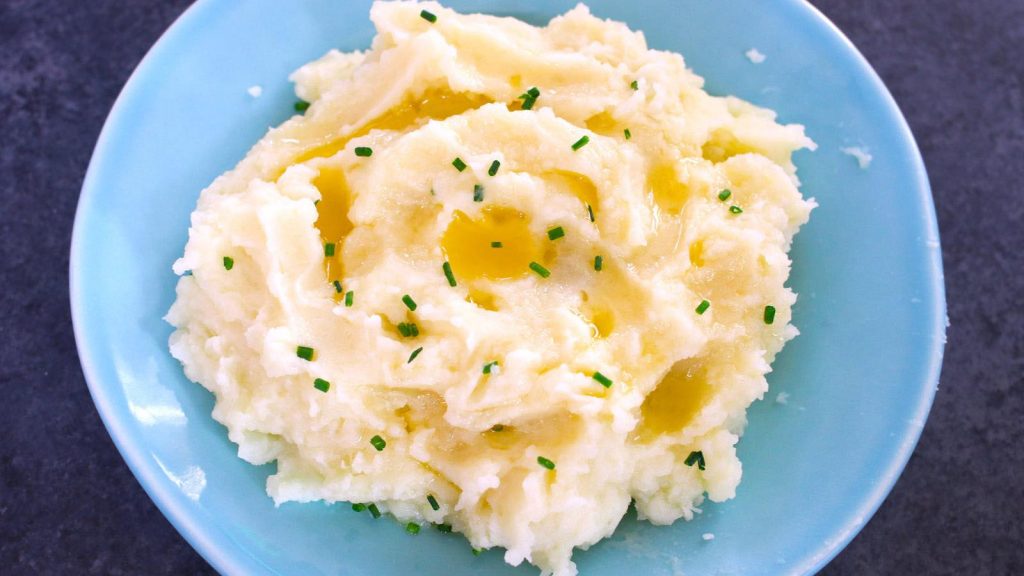
Add in extra salt or your favorite seasoning to taste. Garnish with chopped chives and serve warm.
Tips And Tricks
- No vacuum sealer is required. If you don’t have a vacuum sealer, you can easily vacuum seal a zip-top bag using “water displacement” technique.
- Don’t over-mix the potatoes. It’s best to mash until they are just combined. Otherwise, over-mixing can cause a gummy texture.
- Season with salt along the way. Add a small amount of salt into the bag before sous vide cooking, and add more during mashing. Taste along the way so that your mashed potatoes are not too salty.
The Best Temperature and Time for Sous Vide Mashed Potatoes
The best temperature for making sous vide mashed potatoes is to use a water bath at 194ºF or 90ºC. At that temp, they will take about an hour. Mash the potatoes after cooking.
Topping Ideas
Many toppings are possible for mashed potatoes! Here are a few options:
- A pat of butter
- Salt and freshly ground black pepper
- Sour cream
- Chives or green onions, finely chopped
- Bacon bits or crumbled bacon
- Grated cheese such as cheddar or Jack
- Cheese sauce
What To Serve With Mashed Potatoes
Main dishes going well with mashed potatoes include steak, chicken, pork and seafood. You can also pair mashed potatoes with almost any vegetable including carrots, broccoli and green beans. A crisp green salad also pairs well.
How To Store Leftover Mashed Potatoes
You can store leftover mashed potatoes in an airtight container in the fridge for up to 3 days. Place the container in the bottom of the fridge to keep it as cold as possible.
To freeze, scoop the potatoes into a baking sheet lined with parchment and place in the freezer. Once they’re frozen, store them in portions in individual ziptop plastic bags, seal them, and refreeze for up to 2 months.
Variations
You can tailor this mashed potatoes recipe to your preference. Below are some popular ingredients that you can add to your mash:
- Cheese: I love to add grated Parmesan or shredded cheddar cheese to my mashed potatoes, but you can add your favorite cheese.
- Cream cheese
- Fresh herbs such as rosemary and thyme.
- Cooked bacon bits
- Jalapeños
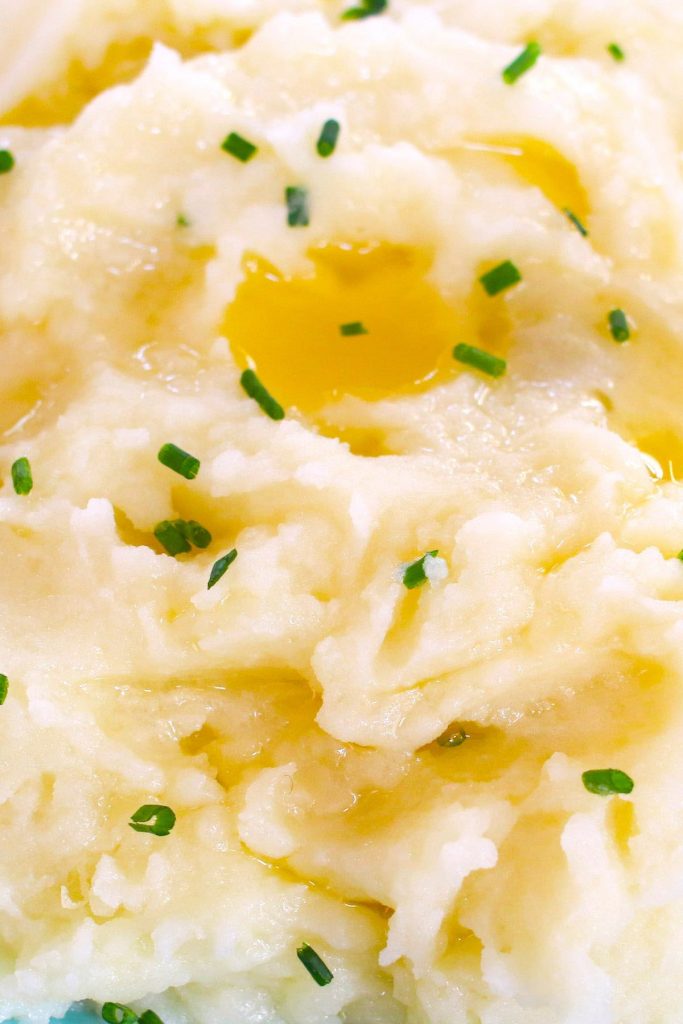
FAQs
Can I make sous vide mashed potatoes ahead of time?
Yes, you can make sous vide mashed potatoes up to 3 days ahead of time. Store them in an airtight container in the fridge and reheat in a covered skillet over medium-low heat until hot, or by sous vide at 150ºF for at least 30 minutes.
How to add texture to mashed potatoes?
To make mashed potatoes creamier, consider adding some heavy cream, half and half or sour cream while mashing. If you are encountering lumps, a ricer is a useful tool for removing them. However, if you prefer a chunkier texture, consider leaving the potato skins on and/or adding some minced garlic.
Can you sous vide potatoes at 150 F degrees?
No, potatoes require a higher temperature like 190ºF for the starch to break down and become creamy. However, you can use 150ºF for reheating sous vide potatoes.
Can you overcook mashed potatoes sous vide?
You won’t overcook mashed potatoes with sous vide, but I recommend sticking to the recommended cooking times and temperatures. Otherwise, you won’t achieve the ideal texture or consistency.
Can I make mashed potatoes with cream cheese?
Yes, cream cheese can add a rich and creamy texture to your mashed potatoes. It will enhance the overall flavor.
Pro tip: I recommend softening the cream cheese before mixing it into your mashed potatoes.
Can I make it vegan?
Yes, you can use plant-based ingredients to make your mashed potatoes vegan. Substitute regular milk with almond milk or soymilk, and replace butter with vegan margarine or olive oil.
More Sous Vide Recipes
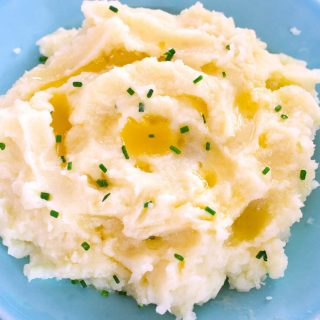
Creamy Sous Vide Mashed Potatoes Recipe
Ingredients
- 2 pounds Russet potatoes, or Yukon golds
- 3/4 cup unsalted butter
- 2 cloves garlic, minced
- 3/4 cup whole milk
- Kosher salt, to taste
Topping (Optional)
- chopped chives
Instructions
- Preheat the Sous Vide Machine: Fill a large container or pot with water. Attach the sous vide precision cooker and set the temperature to 194ºF/90ºC and time to 1 hour.
- Prepare the Potatoes: Wash and peel the potatoes, and cut them into 1/2-inch slices (you can also leave the skins on for extra flavor).
- Place the potato slices into a zip-top bag, then season with butter,salt, and garlic and add milk. Spread out the potatoes evenly in the bag and then seal it using the “water displacement” technique. (Just seal all but one corner of the bag. Slowly place it in the water bath, and make sure everything below the zip-line is covered by water. Then seal the rest of the bag.)
- Make sure the potatoes are fully submerged in the water. You can add heavy kitchen items to weigh the bag down if necessary.
- Sous vide cook the potatoes: Cook the vacuum-sealed potatoes in the water bath for 1 hour.
- Mash the potatoes: When the timer goes off, transfer the cooked potatoes to a large bowl, and add half of the liquid from the bag. Mash the potatoes with a potato masher until smooth, adding more liquid gradually if needed to your desired consistency. (Don’t mix too much or it will get gummy.)
- Taste and season: Add in extra salt and garnish with chopped chives and serve warm. You can also sprinkle chopped green onions, freshly grounded black pepper, add more butter, or other herbs/ seasonings!
Notes
- If you use other types of potatoes or cut your potatoes into large chunks, it could take much longer to cook.
- For leftover mashed potatoes, you can reheat them in the microwave on high power for 2-3 minutes. Stir and repeat until piping hot throughout.
Nutrition
Nutrition information provided is an estimate only and will vary based on ingredient brands and cooking methods used.
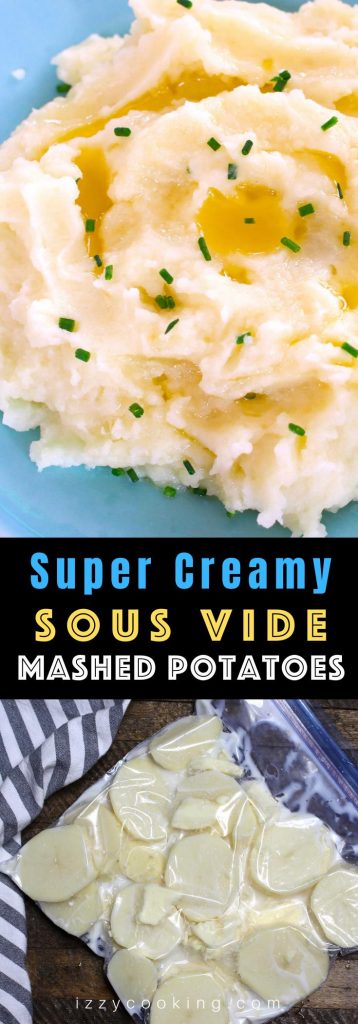
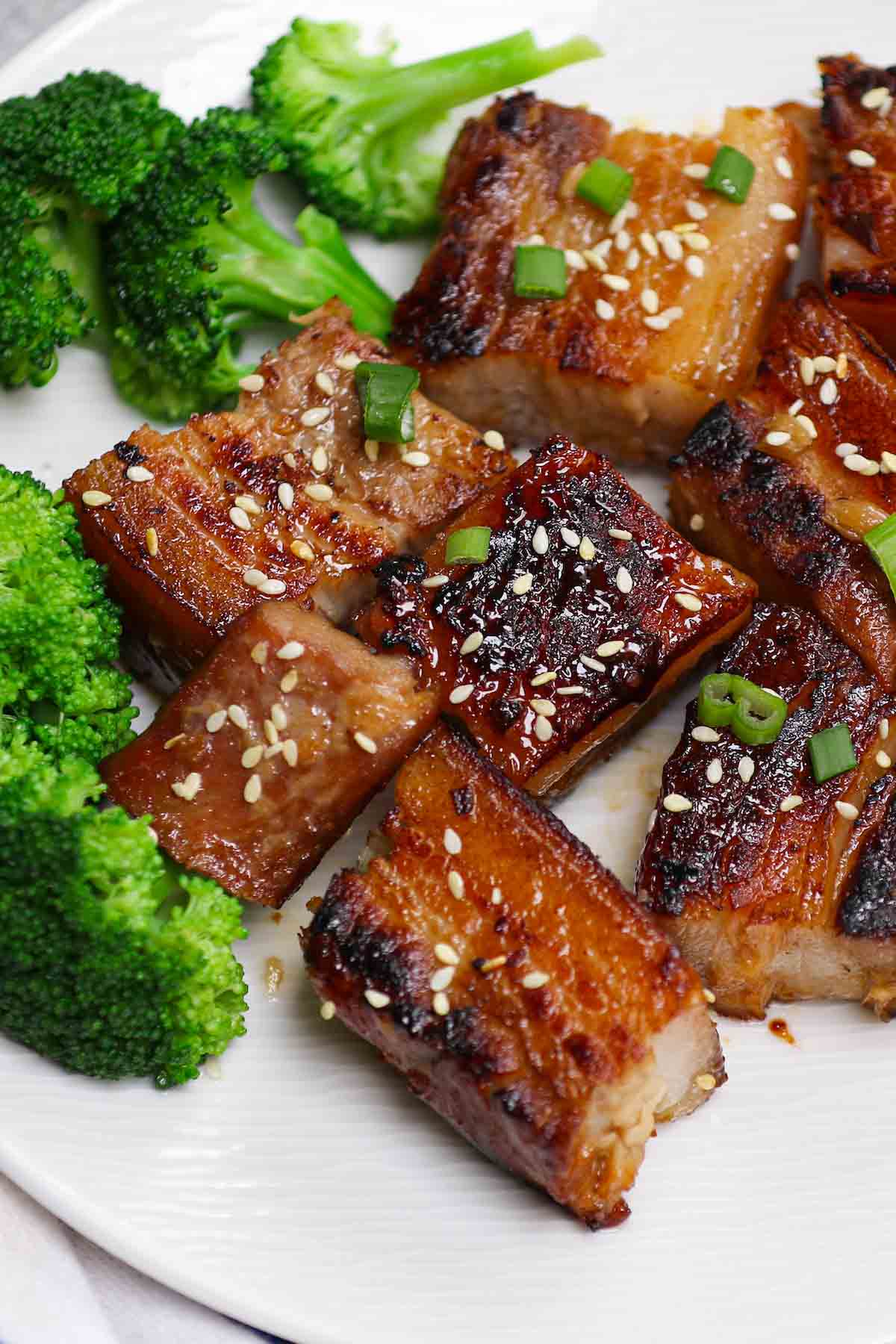
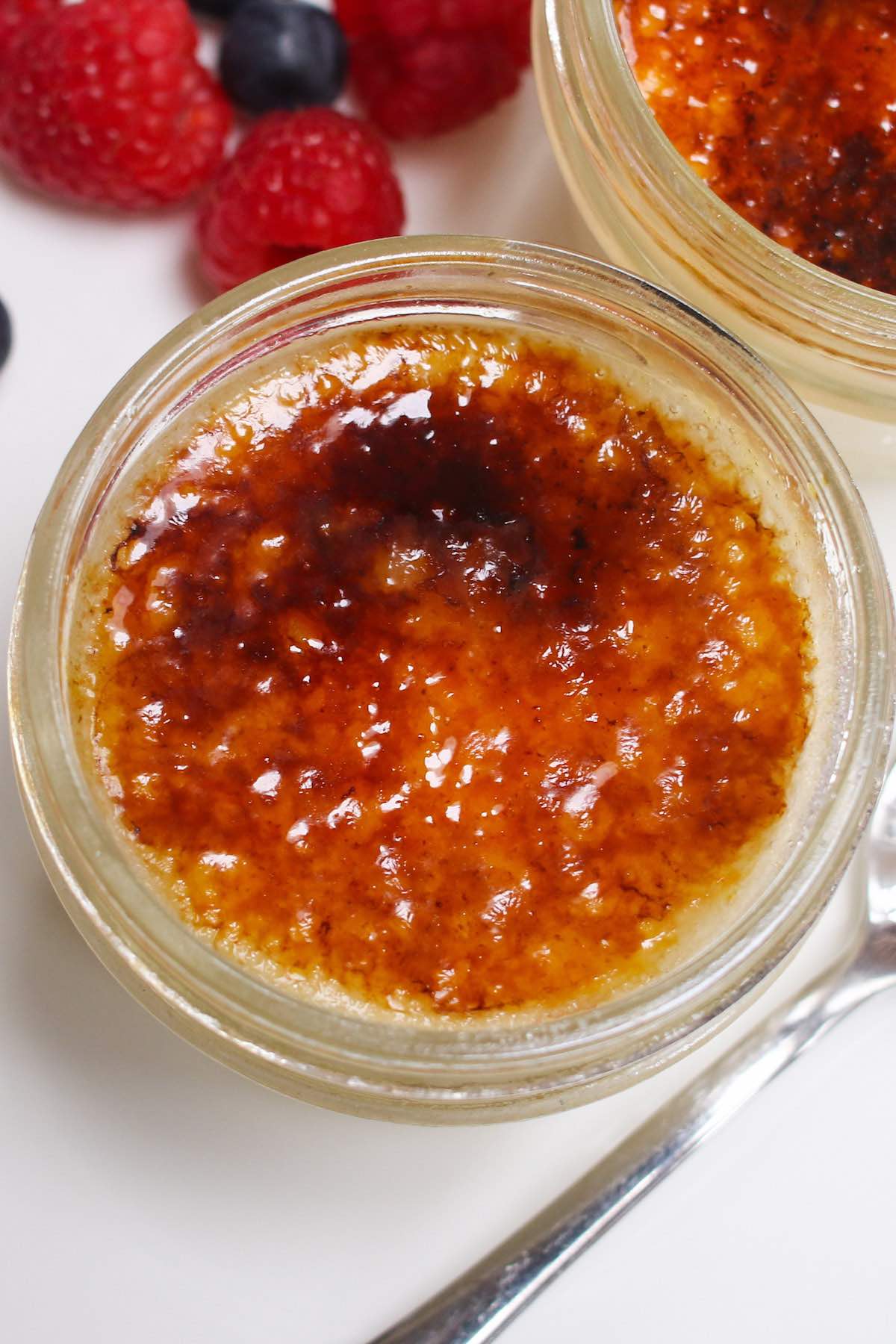
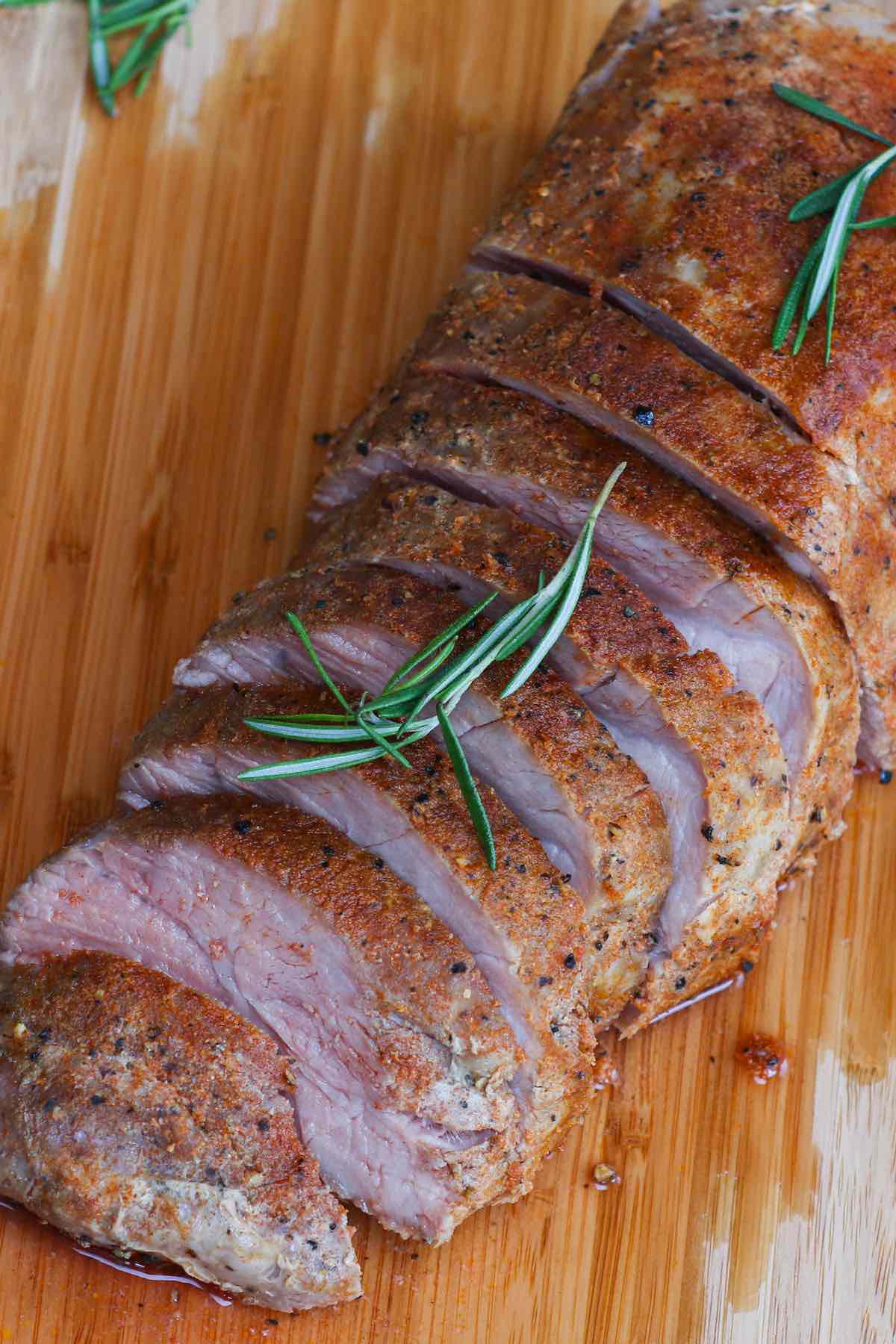
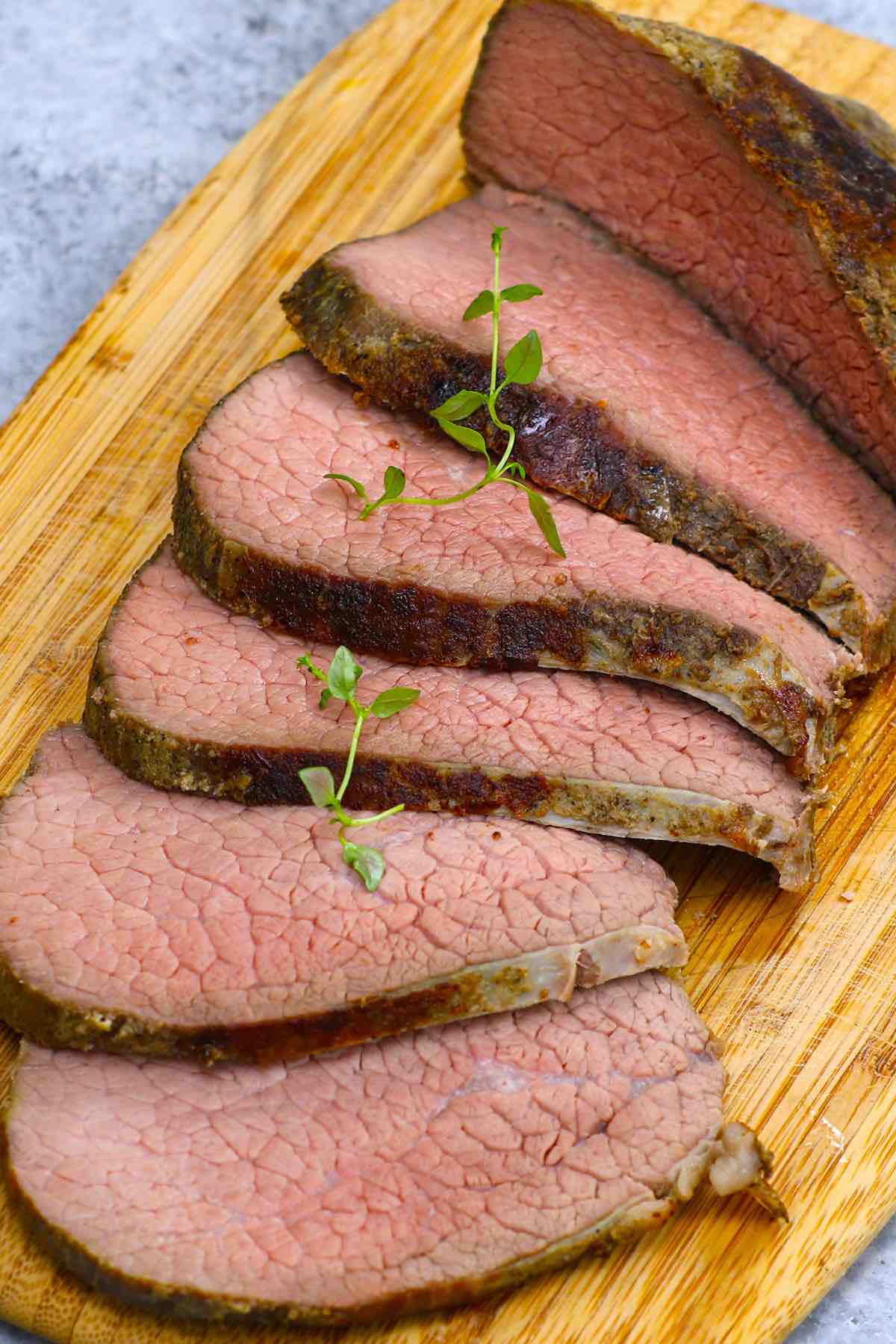
Can I make and seal these and then freeze to cook at a later time?
Most of us have one sous vide wand. We can’t cook potatoes at one temperature and another dish at a different temperature. As these potatoes would be a side dish to accompany a SV meat dish which might cook for two hours, any suggestions for ‘make ahead’ & reheat etc?